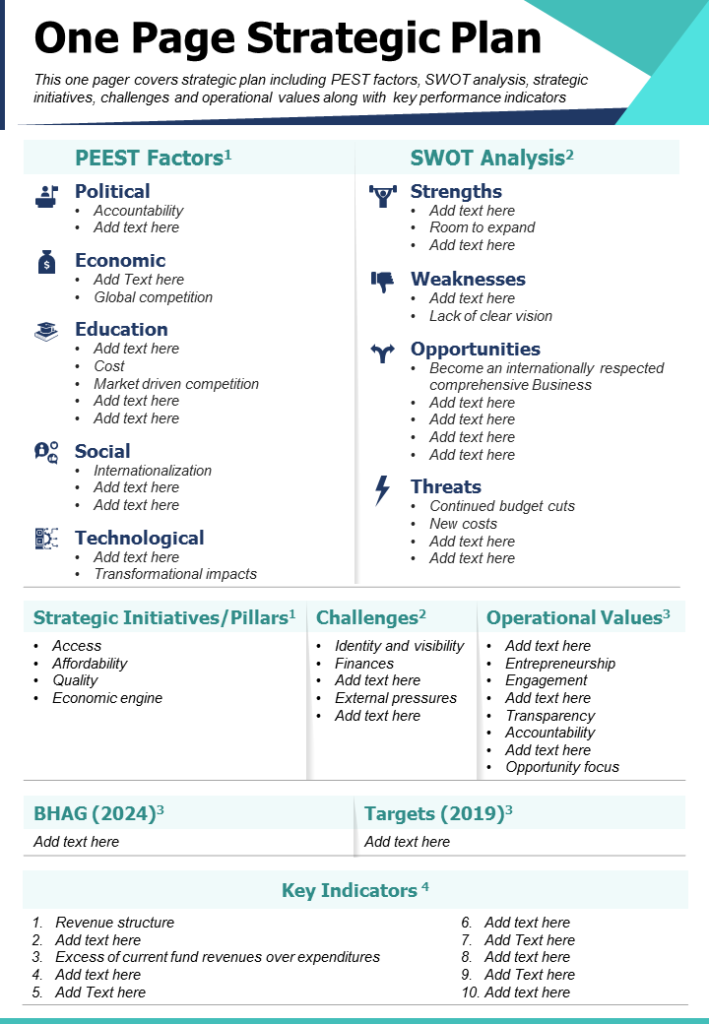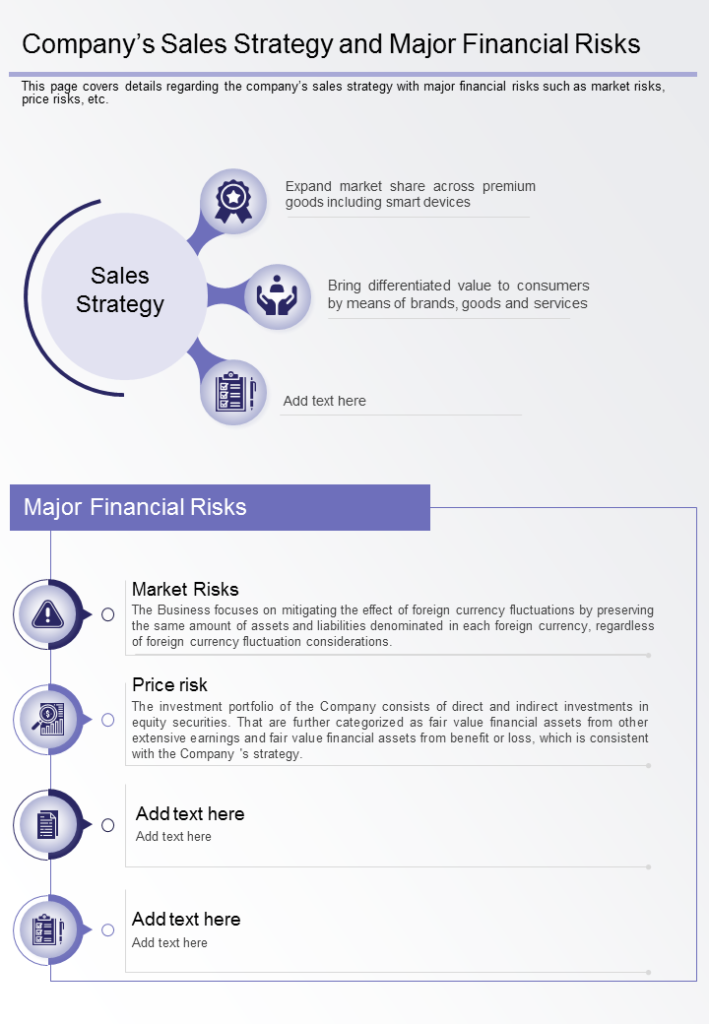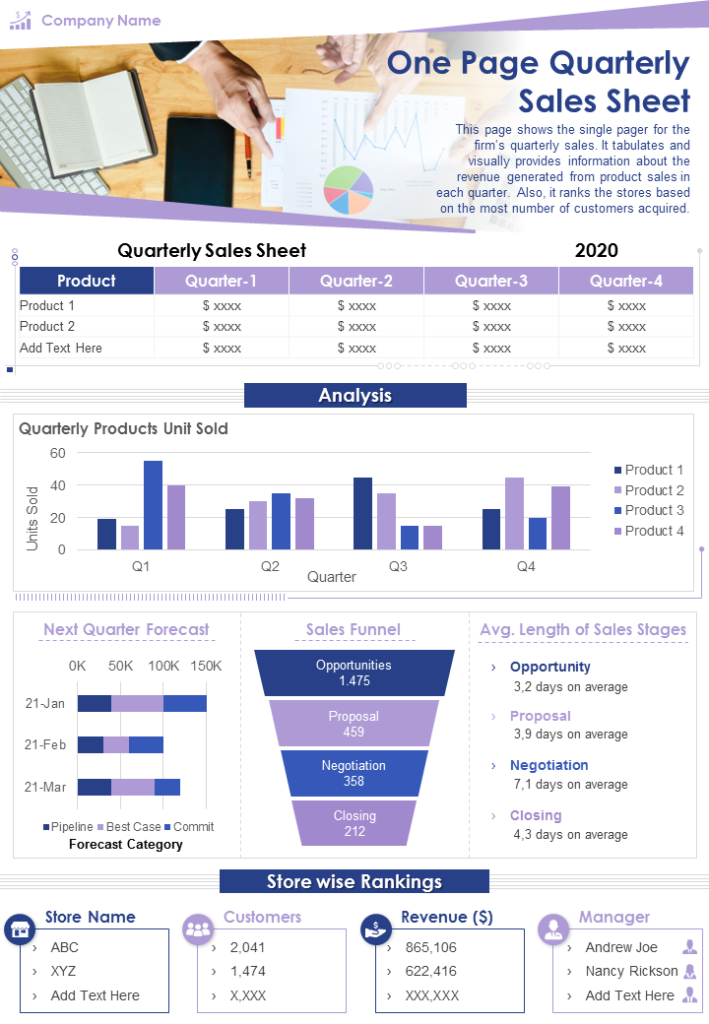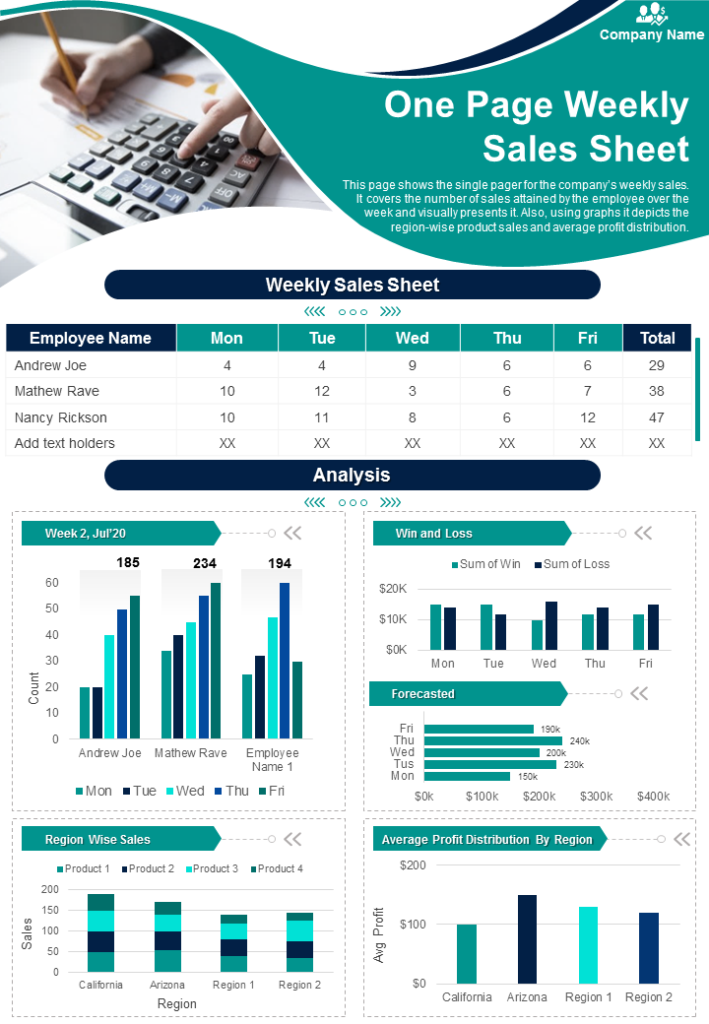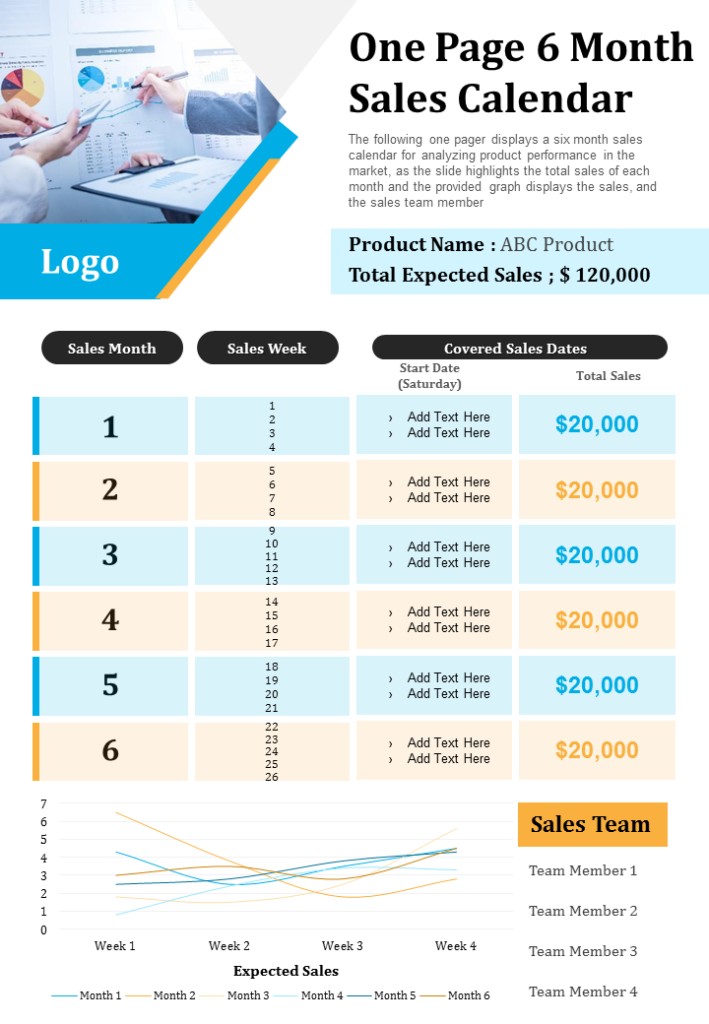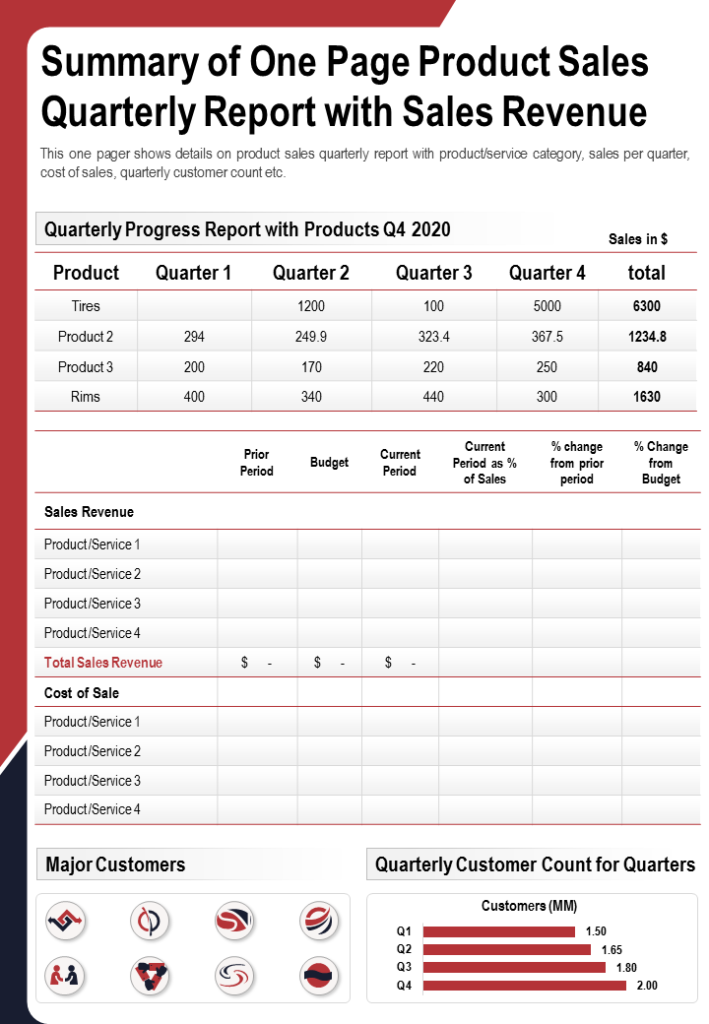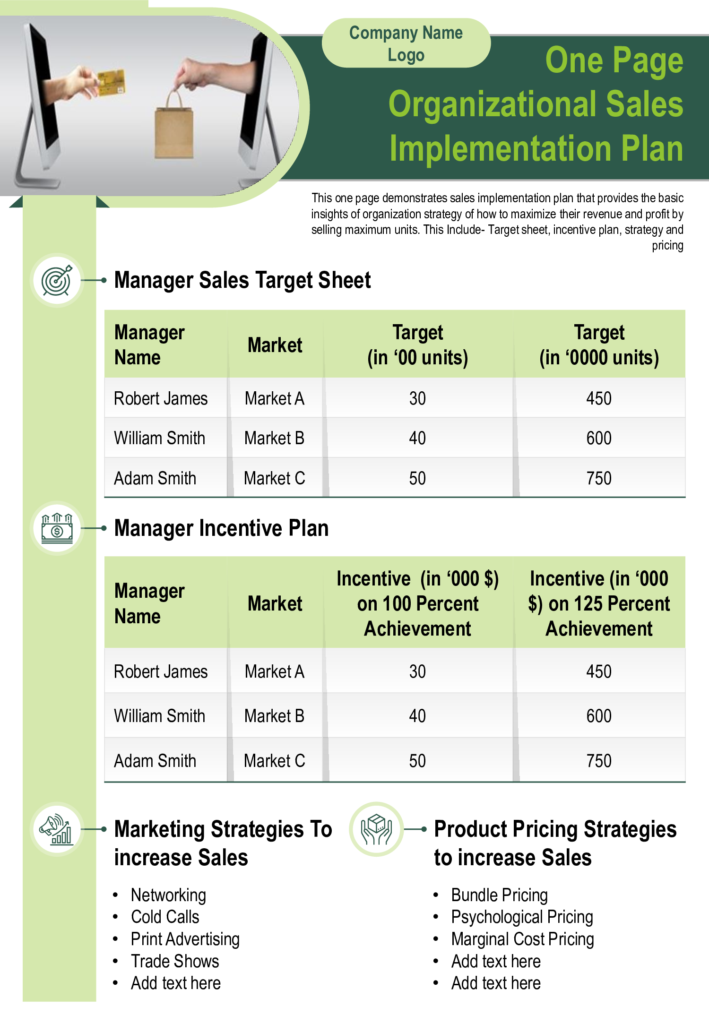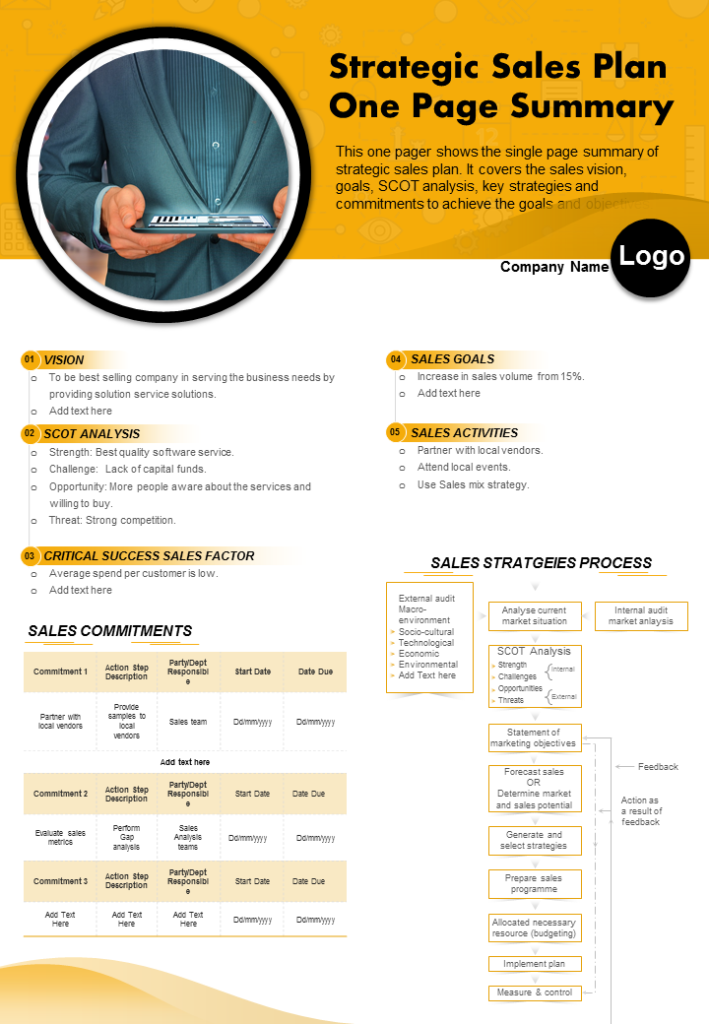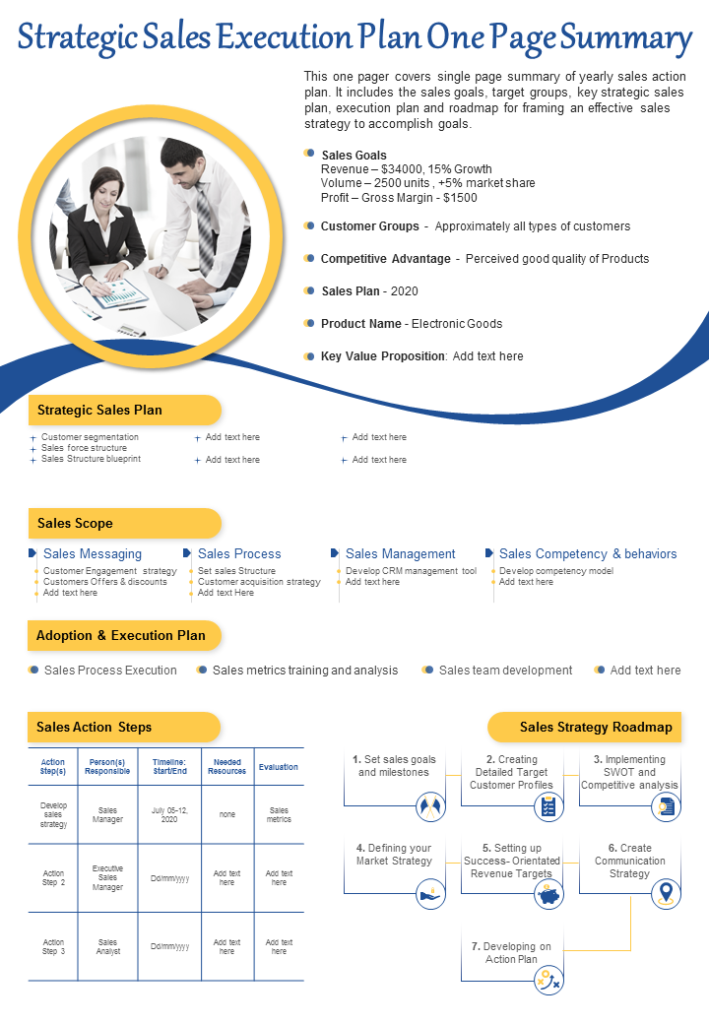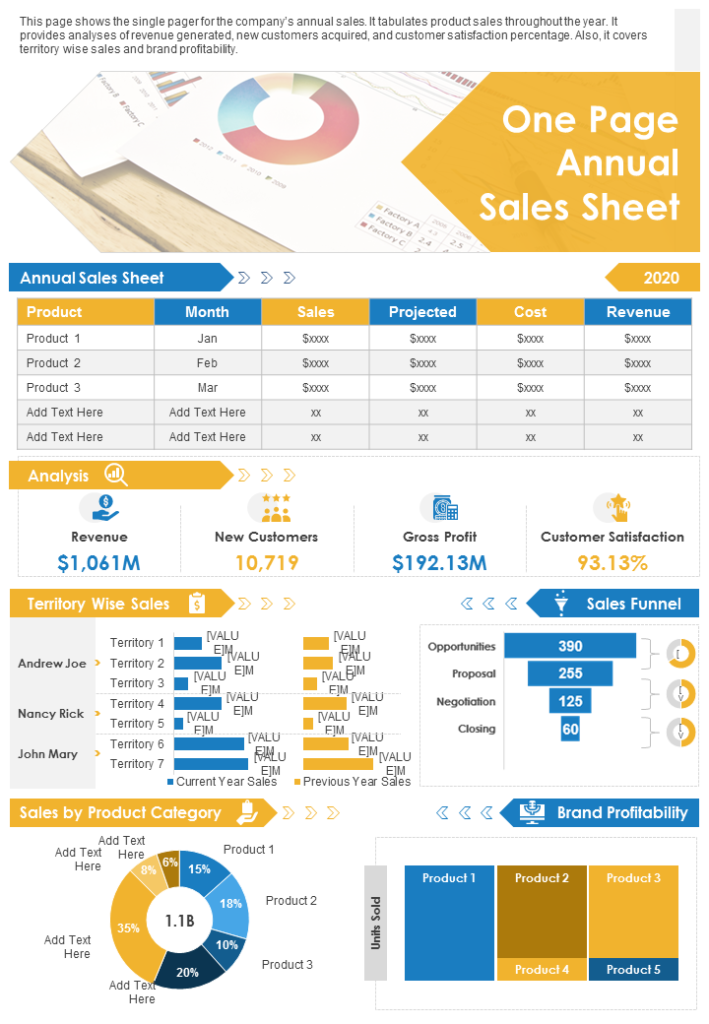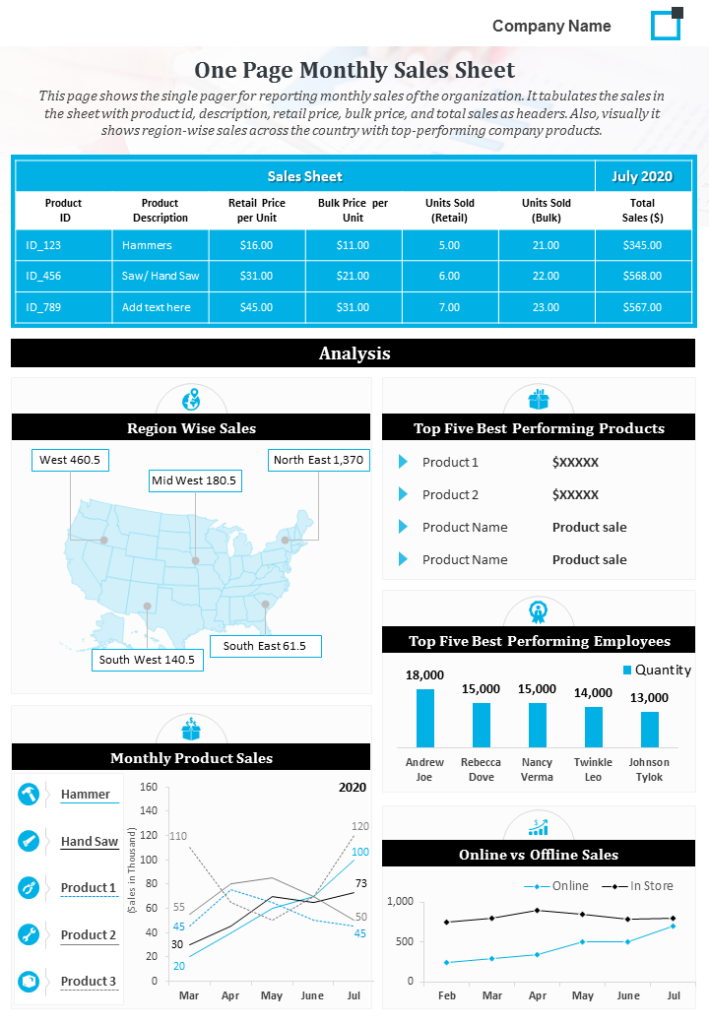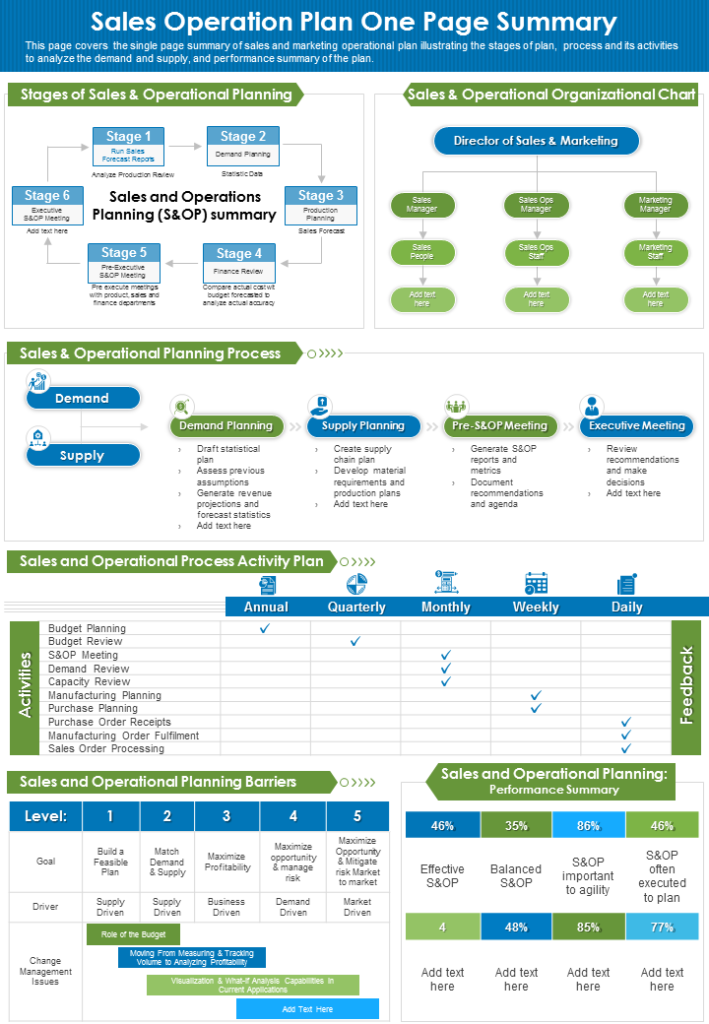It takes a whole another level of skillset to be a sales manager in a company. In fact, managing sales might be a tad too simple a phrase to describe it. It's about defining and operating revenue streams, keeping up with the numbers and goals, and most important of all, creating a strategy for the organization to follow. And devising a sales plan is a crucial part of that job description.
For the uninitiated, a sales plan is a well-structured format that defines and delineates the processes and people involved in driving sales for a particular business. Companies use a sales plan as a tool to analyze various strategies to bring in more revenue. Coupled with a marketing plan, a sales plan boosts tactical management and fulfillment of company objectives.
That a comprehensive sales plan is a roadmap to success for a company is a well-discussed and well-propagated topic. But in this blog, we shall be discussing 8 different approaches to creating one-page sales plans that carry the gravitas of a multi-slide presentation on a single page while being an absolute powerhouse in terms of agile strategizing.
For starters, here is the basic structure of a one-page sales plan that every sales guru follows.
- Executive summary: A brief description of what all is there in the sales plan and what tools and routes are to be taken to achieve the goals described in it. It sums up everything you have assigned to be accomplished in the sales plan.
- Goals and objectives: What is the sales plan for? The goals and objectives define that. For instance, for a chocolate company, the goals and objectives are listed as a certain number of units of a new flavor to be sold.
- Target customer: Who are you selling the new flavor of chocolate to? Is it a younger demographic that is looking to try something new for the taste buds? Or is it a more adult crowd that needs to add another kick to their gifting options? In short, define your target customers you will apply the sales plan to.
- Past performance metrics: How have the past sales campaigns fared? Was a new variant of chocolate able to appeal to the masses? How good or how lagging were the revenue figures? Define that in this section.
- Sales tactic: How will you sell the new variant so that it just flies off the shelf? Rather what strategy will you employ to accomplish a more progressive outcome than that of the previous campaign? Sales tactic defines the moves that drive the cash towards your business.
- Resource outline: It will take resources to get the new chocolate variant in the line of sight of the customers. Define the budgetary requirements and team composition in this section. Thereafter, the team will take up their assigned duties and budget and hustle according to that.
This blog will also provide you some of our catchiest one-page sales plan templates that you can simply incorporate in your business strategies. Some handy tips also follow ahead. Read on and crank up your revenue a million notches.
Devising a one-page sales plan: 8 effective strategies
Drafting a one-page sales plan can be a challenge even for some of the most seasoned VPs of sales. Summarizing all the workable tactics and metrics onto a single sheet of paper can take a lot of head scratching and document scanning. But if one follows a guided approach to making anything, the results will be beyond productive.
So how does one craft a sales plan that will guide your team to pull up their socks and achieve the intended goals with unbeatable efforts? We did some digging and found out eight easy approaches that you can follow to craft a one-page sales plan according to the business or project you are handling. Use the templates to put things into action as well. Here are the practical approaches:
#1 The SWOT approach
A key concept for emerging and well-established companies, SWOT stands for Strengths, Weaknesses, Opportunities, and Threats. SWOT is a strategy to evaluate every crucial aspect regarding a business decision. This decision could be a product launch or a financial initiative. SWOT helps make an informed decision. Therefore, the SWOT approach allows constructing a carefully-weighed one-page sales plan. This approach follows the basic idea of putting the best foot forward.
Works for: The SWOT approach follows a focused outline. So it is suitable for companies trying their hands at their first sales strategy. Although SWOT has gathered steam in the top-tier business circles as well. But small companies can make utilize this methodology for crucial projects.
Use these templates: SWOT approach warrants highlighting the concerns one can have regarding a specific entity of a business. So you can depict that with these fully-editable one-page sales plan templates. Download them and create a top-notch sales strategy.
#2 The ladder approach
Progression is the essence of a profitable business. When you have got a roadmap clearly laid out for your sales strategy, you can break it into achievable steps. Hence, the ladder approach takes shape. With this method, you get to reform your sales plan after the analysis of a certain period of activity and campaigning. Another key aspect of this format is that it elaborates on goals and past metrics equally so as to clarify the vision for a particular sales strategy.
Works for: The ladder approach allows a lot of flexibility in terms acquiring and deploying the resources to meet sales targets. Hence, a one-page sales plan developed with this strategy works for companies looking to expand their sales in an incremental manner within flexible duration. It helps the company plan according to a stable market dynamic. Also its usability is at the discretion of the key decision makers in the management.
Use these templates: The incremental approach can make your company vision shine. Incorporate these templates to plan out an exponentially productive campaign. Use the crisp design to communicate well with the stakeholders.
#3 The 30-60-90 approach
How do you track and adapt your sales strategy? With the 30-60-90 approach, of course! A more definitive subset of the ladder approach, this methodology of drafting one-page sales plan enlists one’s strategy for each progressive month. In other words, the plan for 30 days, then 60 days and then 90 days. As each milestone is reached, the stakeholders get to revise the strategy at the decided point. If the strategy is bringing in the numbers (or performing beyond expectations), the same strategy is continued for the next milestone.
Works for: Just like ladder approach, the 30-60-90 strategy works for preparing sales plan of companies looking to grow their outreach in terms of revenue and customer demographics. Though the flexibility is only limited to the point of achieved milestone, the approach gives small and growing companies a breather for analysis. Rather this approach makes it easier to focus on peripheral tasks for the business as well.
Use these templates: When you are looking to impart a definitive structure to your one-page sales plan, you have to ensure that there is clarity of thought. So you can use the following templates to make your point clear and concise. Edit these as per your strategy and use them for effective communication.
#4 The achiever approach
Who sells your product? Your people! A more team-centric approach, the achiever strategy of formulating one-page sales plan puts the lens on past performance metric and the DRIs or directly responsible individuals. Who sold the most chocolates to the customers last year? Or who closed the highest number of deals with big retail stores? The achiever approach denotes the most productive aspect of a sales plan up front. It emphasizes the team that makes it happen and keeps a track of their performance as the plan progresses with time.
Works for: If you have a small team with the most basic strategy, the achiever approach helps you set benchmarks for the team to cover. However, if you have a large team with a broader skillset, the approach helps create a personnel structure and utilize their core competencies accordingly. It also helps create an effective feedback loop for the employees in the sales team.
Use these templates: How will you make the one-page sales plan work with the achiever approach? With a crisp outline of achievers in your team, of course! Use these templates to put your performers on the map. Inspire your team to get things done with these fully-editable templates.
#5 The quota approach
So you need a level-playing field. The quota approach is here to help. This methodology assigns certain minimum quotas to be fulfilled by the team members as per their capacities over an assessed deadline. This could include, let’s say, making around 200 cold calls in 3 weeks regarding the new product, pitching to retail stores or third-party suppliers, and so on. The quota strategy defines the duties in an objective manner to instill a sense of achievement within the team. Also, it leaves out any room for errors of understanding for better performance.
Works for: The quota approach can work for short-term sales projects with thin deadlines. The more tasks you have, the better the appeal of this methodology for creating a one-page sales plan. The team outline can be widened as per the needs of the project. You can also enlist shared quotas to reach the end goal of your sales campaign.
Use these templates: Flexible design makes it easy to incorporate elements to track performance of your team. Boldly set targets and deadlines with these full-editable one-page sales plan templates. You can also arrange the icons and text according to the strategy for your team.
#6 The roadmap approach
You can achieve quotas per your business needs. But when you have to take a microscopic view, you have to define the collective goal of these quotas. The roadmap approach, therefore, assembles the batches of these quotas into a decipherable process flow towards the end goal — more sales. This methodology makes the sales plan more process-oriented. This gives a more bird’s eye view of the sales plan that can assist in making processes more communicative and sequential. In this approach, one can also include any prospective goals, partnerships and acquisitions that need to be executed to reach the end goal.
Works for: The strategy to define a roadmap works well within elaborate organizational structures. In fact, upper and middle managers in the corporate sales wing can use the roadmap sales plans to define goals for the subordinate teams. Each accomplished batch of quotas then can add to better planning ahead.
Use these templates: Strike a balance in your team operations and take on large sales targets with these fully-editable templates under the roadmap approach. Enhance your process flow and define your objectives with the smooth design. Just edit and deploy for incredible results.
#7 The synapse approach
Defining the structure of a mega sales strategy can be challenging for many managerial heads. How will the structure stand out in front of the competition? What if more communication is needed over certain channels of a company? Will the same tactic work for every location the company is serving in?
The answer to all these questions lies in the synapse approach. Just like a neural synapse, or signal transmission in the network of nerve cells in the brain, this approach puts the onus of tweaking strategy across locations on the communication between regional managers. If, for instance, the chocolate products sold better in Russia with a retail tactic, the same may not apply to India. Rather the strategy may need a little tweak to address the varied customer dynamics. The synapse approach defines which regional manager accomplishes what in furtherance of the company’s global sales objective.
Works for: As evident, the synapse approach works for companies having cross-continent operations with varying degrees of customer intent. The upper layer of sales management decides on the targets for various regional managers in the organization and how they will relay the information once they complete them. The approach makes it easier for analytical tracking and reporting of large-scale sales projects.
Use these templates: Put performance at the forefront with these full-editable one-page sales plan templates. The crisp outline helps arrange and assign targets easily. The end product can also help in efficient team communication when there are global operations involved. Use these templates and add value to your efforts.
#8 The value approach
The epicenter of all sales endeavors in a company is the customer. And with changing needs of the customers, one has to adapt using technology and tactic alike. Also one has to factor in the market situation to plan any sales project. The value approach, as the name suggests, focuses on value to bring to the loyal as well as prospective customers. This approach goes hand in hand with a marketing plan to create a progressive strategy. With the marketing plan, one gets to reach out to the customer and then execute the sales strategy as needed.
Works for: The value approach is also one of the most flexible methods of devising a sales plan. However, it needs high level of coordination with other departments to execute successfully. Therefore, this approach is suitable for large businesses with more time and bigger budget. The companies with a substantial customer portfolio can also deploy this approach to bring in fruitful results.
Use these templates: When inter-departmental connect is in question, companies have to leverage a crisp outline for their sales plan that makes it easy to execute any strategy for profits. Therefore, you can download and use the following templates to make that happen. Edit these templates and you are good to execute any sales strategy.
Some tips to make a one-page sales plan work wonders for you
Planning has several benefits. But having a one-page sales plan? Innumerable! A well-crafted summary of your sales operations and tactics can uplift the team morale. Additionally, it can make it easy for you to assign tasks and track the team performance metrics. It can also lead to concerted and, hence, impactful efforts and better productivity. The crisp structure of a one-page sales plan makes it easy to follow and communicate as well. However, you can get the most out of this nifty little document with just a few simple tricks. We share some handy tips here.
- Set workable goals: Sure you need a budget to carry out the sales campaign. But as a sales manager you must set realistic targets based on market scenarios. If there is a niche that your product isn’t touching, you have to include that in the sales plan to show promise. Extensive market research is key. So is using data and current figures to give a revenue projection. Use a CRM software if you must.
- Verify, verify, and verify: A second check doesn’t hurt. Once you have arranged the facts and figures for your sales plan, you must verify them for accuracy. The more accurate the information, the better the prospects of the sales plan. Here’s where setting workable goals comes in handy. So align your budgetary requirements according to these verified facts.
- Change is inevitable: After you have ensured that the sales plan is, indeed presentable, always expect suggestions. Do not feel confused if the budget does not get a nod right away. Work on the feedback and present the sales plan again. The more you pay heed to feedback, the more thumbs up the plan will get.
- Do not fuss over executive summary: Often the most ignored part of a one-page sales plan, the executive summary can be the smartest part instead. If you cannot figure out how to write the hook of your one-pager, just do it after you are done with other components. This will help you summarize your campaign story better.
- Consultation adds value: Having a business analyst on board is an often overlooked move. If you are planning to draft a sales plan for the entire organization to follow, you can bring in a consultant to get a brief as well as in-depth view of your corporate strategy. Additionally, the consultant can help you address your target customers better.
So to sum up…
While you may choose any of the listed approaches as per your business needs, the essence of a good sales plan is in defining your goals clearly. So even if you want to use the sales plan as a tool to get budget for your next campaign or get multiple external entities on board, clear communication will always be the key. Therefore, using a one-page sales plan will prove a huge catalyst for enhanced revenues in the long run. Put that to a profitable use and play with our editable templates for good measure. As far as attractive one-page sales plan design is concerned, our design wing is always there to listen. Give our industry experts a try and watch those winning numbers shoot up.





 Customer Reviews
Customer Reviews

